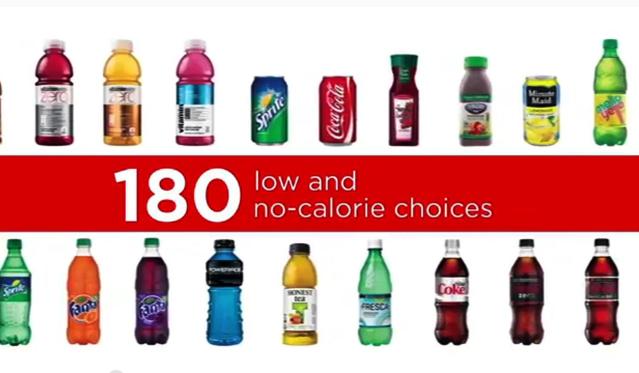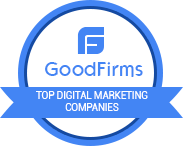
Signage advertising can help you to attract customers or increase brand awareness. It's actually one of the best marketing tools. Unlike other forms of marketing, it's a direct line of communication with your audience.
It can be used by your company to display its products and services. But it can also be used to inform customers. You could use signage to provide directions and information to customers if you are a restaurant. This can make your visitors feel more comfortable.
Digital signage can be used to engage your audience and increase sales. Instead of simply showing customer information, digital signage can be used as a way to create an interactive and fun environment. You can do this by providing information on upcoming events, news items, and even suggested usage.

Signage is an important part of life, even though many people don't know it. It is not only important for your customers but also for hospitals, colleges and other institutions who want to offer the best experience possible to their patients.
The digital signage industry has undergone many significant changes in recent years. There are still many questions. There is a lot of confusion over digital signage and how to best use it. There are some important points to remember when choosing the right signage for you.
First, you'll want to determine the size and shape of your signage. You will also need to consider the size and visibility of the screen. The color scheme and letters should be considered. Signs that are too small or poorly made may be difficult to read. It is also important to think about the cost of maintaining the display.
Finally, decide whether you will use digital or traditional signage. You can use traditional signage to decorate your interior and brand your business. It's better to be tech-savvy if you want to make the most of your investment.

You can make your signage stand out by using the most powerful features available in digital signage. The technology can be used to display your latest promotion or even give a demonstration. Other uses for digital signage include displaying health and safety information and giving your customers a better understanding of your products and services.
One of the best parts of this type of advertising is the ability to target your audience based on their interests and demographics. Your digital sign can be set up to automatically adjust the content according to what you want to communicate. Digital signage has another advantage: you can eliminate printing new messages. This will save you the hassle of having to waste print runs.
FAQ
How do I choose my target audience?
Begin by talking to yourself and people close to you. Ask yourself "Who am I trying reach?" if you aren't sure where to start.
Ask yourself these questions. Who are the most influential people within my industry? What are their daily problems? Which people are the most intelligent in my industry? Where do they hang out online?
Start at the beginning of your business. What was your motivation for starting? What problem solved you for yourself? How did that happen?
These answers will help to identify your ideal clients. These answers will help you understand your ideal clients and what motivates them to buy from you.
To get clues about who they cater to, you can also check out your competitors' social media pages and websites.
Once you identify your target customers, then you must decide which channels to use to reach these people. A website might be created to reach home buyers, for instance, if your business provides services to agents in real estate.
If you provide software to small businesses, you could develop a blog targeting those companies' owners.
A Facebook page could be created for clothing sellers. If you own a restaurant, you can set up a twitter account to provide information for parents searching for child-friendly options.
You have many options to convey your message.
Is it possible for traffic to be free?
Free traffic refers to traffic which comes directly from organic search results. This type of traffic is called natural or organic traffic. There are many options to get free traffic like article marketing and social media marketing.
Article Marketing is one of the most popular methods of getting free traffic because articles have an extremely low cost per click (CPC). Paid ads have a higher CPC, but the CPC is typically much lower than paid ads. Content marketing is also known by the term article marketing.
Social Media Marketing - These social media sites, such as Facebook, Twitter or LinkedIn, allow you to advertise your business. These sites allow you to update, share photos, and develop relationships with people who could become customers. Many businesses choose to buy ad space in social media because they want a wider reach at a reduced price.
Blogging - Another great way to generate traffic is blogging. Writing quality content that people like reading will help you attract visitors. You can start to monetize your blog with the sale of products or services after you have attracted readers.
Email Marketing – Email marketing has been around ever since the dawn of the Internet. However, it remains one of your best methods to drive traffic to you website. Regular email marketing is a great strategy to increase your subscribers and ultimately sell something.
What is the basic purpose of advertising?
Advertising is more than selling products. It's about building an emotional connection with your customers.
Advertising is about communicating ideas and values to people who are already interested in what you have to offer. Advertising is about changing people's minds and attitudes. It's about building trust.
It's all a matter of making people feel good.
However, if your customers don't want what you have to offer, you won't be able to sell anything.
You must first get to know your customer before you can start advertising projects.
This will allow you to create ads that resonate with your target audience.
What is an ad campaign?
An advertising campaign is a series of advertisements designed to promote a product or service. It may also refer to the entire production of such ads.
The Latin word "to sell" gave rise to the term "ad". The first known use was by Marcus Terentius Varro (116-27 BC), who used it as a verb meaning "to make a sale."
Advertising campaigns are most often done by large agencies or businesses. There may be many media types involved, including print and television as well as radio, TV, and internet.
Advertising campaigns are typically long-lasting and have clear goals. Advertising campaigns can have different goals. Some are focused on increasing sales while others generate awareness.
What is the cost of advertising on social media?
It is important to know that advertising on social media platforms is not free if you decide to do this route. You will be charged monthly depending on your time on each platform.
Facebook - $0.10 per 1,000 impressions
Twitter - $0.20/1000 impressions (if applicable)
If you send invitations, Linkedin: $0.30 per 1,000 impressions
Instagram - $0.50/1000 impressions
Snapchat - $0.60 per 1,000 impressions ($0.40/user)
YouTube - $0.25 Per 1,000 Views
Tumblr – $0.15 per 1000 impressions for text postings
Pinterest - $0.05 per 1,000 impressions per month
Google + $0.15-$0.20 for 1,000,000 impressions
Tumblr $0.15- $0.20 for 100,000 impressions
Vimeo - $0.20-$0.25 per 10,000 impressions
Soundcloud - $0.20 - $0.0.25 for 1,000,000 plays
StumbleUpon - $0.20 -$0.25 per 1 billion pageviews
Digg - $0.20 to $0.25 per 1000 diggs
Reddit - $0.20-$0.25 per 1000 comments
Wordpress $0.20-$0.25 per 500 Comments
Flickr - $0.20 -- $0.25 per 5,000 photo uploads
What should you know about printing advertising?
Print advertising is an effective way to reach consumers. Many companies use it to promote products and services. The goal is to get the consumer's attention.
Print ads are usually one-page long. They contain text, images, logos, and any other graphics. These ads may include sound, animation and video as well as hyperlinks.
These are the main types of print ads:
1. Brochures: These large-format printed pieces are meant to draw customers into stores. They are often filled with colorful images and catchy designs.
2. Catalogues: These are smaller versions or brochures. They are sent to customers who have requested specific information.
3. Flyers – These are tiny pieces of paper distributed at events like concerts or fairs. They can be given at retail outlets but must be paid for.
4. Posters – These are larger versions than flyers. They are placed on walls, fences, buildings and other surfaces. These are often created with computer software programs to grab the attention of passersby.
5. Direct mail - This refers to letters or postcards mailed directly to potential customers. These cards are sent by companies periodically to remind their customers about their company.
6. Newspaper Ads are placed in newspapers and magazines. These ads are often quite long and include both text and images.
What is branding exactly?
Your brand is your way of communicating who you are as well as what you stand behind. It's how people remember you and your name.
Branding refers to creating a brand that is memorable for your company. Branding is more than a logo. It encompasses everything, from the physical appearance of your company to the voice and tone used by your employees.
A strong brand helps customers feel confident in buying from you because they know exactly what they're getting. Customers feel confident in choosing your products to those of their competitors.
A good example of a well-branded company is Apple. Its brand is known worldwide for its sleek design, high-quality products, and customer support.
Apple's brand has become synonymous with technology. Apple is what people think about when they see a smartphone, computer or tablet.
If you're considering starting a new business, you should consider developing a brand before launching. This will give you and your business a face.
Statistics
- Advertising's projected distribution for 2017 was 40.4% on TV, 33.3% on digital, 9% on newspapers, 6.9% on magazines, 5.8% outdoor, and 4.3% on radio. (en.wikipedia.org)
- Google will display whichever ad type (CPM or CPC) is expected to earn more revenue for the publisher, which is in Google's best interest since they take a 32% share of the revenue. (quicksprout.com)
- It collects money from the advertisers, keeps 32% for its role in facilitating the process, and the remaining 68% goes to the publisher (you). (quicksprout.com)
- It's 100% reliant on your website traffic. (quicksprout.com)
External Links
How To
How do I advertise with Google?
AdWords, Google's advertising platform, allows businesses to buy ads based upon keywords they wish to target. First, you need to set up an account. First, you choose a campaign name. Next, you set the budget and select the ad type. Finally, add keywords. You then place your bids on these keywords. Clicking on an advertisement will only result in you being paid if the click is from someone who searched one of your targeted keyword phrases. This ensures that you are paid even if people do not buy anything.
Google offers many tools to help ensure that your ads are effective. These include Ads Preferences Manager, Keyword Planner, Analytics, and Ads Preferences Manager. These allow you to see what works best for your business.
A keyword planner allows you to determine the best keywords to use in your campaigns. It can help you decide whether or no to spend money on certain keywords.
You can use Ads Preferences Manager to change settings like the maximum number of impressions per day and the minimum cost per click.
Analytics allows to track your ads' performance and compare it with other campaigns. You can also view reports comparing the performance of your ads with others.